
RIP: YOUR WORKOUTS WILL BE DEATH
Sergio Guerrero
INTRODUCTION
In this new article we will talk about one of possibly the most powerful pre-workouts on the current, Spanish, and legal market. Real RIP from the BIG Science range is a compound formulated by a series of compounds that, in synergy, make it unique.
Among the compounds we find the following:
- Cocoa dry extract, active ingredient: Theobromine
- Mango dry extract, active ingredient: Mangiferin
- Anhydrous Caffeine
- Dry extract of St. John's wort, active ingredient: Hypericin
- Beta Alanine
- Black pepper dry extract: active ingredient: Piperine

MECHANISM OF ACTION
THEOBROMINE
Theobromine is a xanthine alkaloid found naturally in the cocoa plant , from which chocolate is made. It itself is a white or off-white crystalline powder, and is responsible for giving dark chocolate its bitter flavor . Darker chocolate with higher cocoa content is more bitter due to its higher theobromine content. Furthermore, theobromine is also a metabolite of caffeine , which is metabolized in the liver into 12% theobromine, 4% theophylline, and 84% paraxanthine as seen in Figure 1.

- Figure 1: Caffeine metabolism.
Unlike caffeine, which is highly soluble in water, theobromine is only slightly soluble in water and is more soluble in fat and therefore peaks more slowly in the blood . While caffeine peaks after only 30 minutes, theobromine requires 2 to 3 hours to peak. The elimination half-life of theobromine is 6 to 8 hours .
The main mechanism of action of methylxanthines, such as theobromine or caffeine, is through inhibition of adenosine receptors. We already saw this in the article Caffeine : Other ways .

- Figure 2: Theobromine binds to adenosine receptors to block them, thus preventing adenosine from binding. Self-made illustration. Sergio Guerrero.
In addition to blocking adenosine receptors, it also has the following physiological effects, such as:
- Increase cAMP activity . This compound reduces inflammation, widens blood vessels and increases stimulation
- Decreased blood pressure due to widening of blood vessels
- Improve cognitive function
- Increase blood flow. This allows more oxygen to be delivered to the muscles
- Improves cholesterol by reducing LDL
- Bronchodilator effect thus improving VO2 Max. and improve exercise economy.
As can be seen, the similarities with caffeine or other xanthines are similar, so the addition of theobromine to that of anhydrous caffeine will enhance its effect and the duration in plasma of both xanthines will be greater than with a alone.
MANGIFERIN
Mangiferin is a xanthonoid, more specifically a glycosylated form of noratiriol. As its name suggests, it is found in the mango tree (Mangifera indica) but also in the red ceiba (Bombax ceiba) or even in the less exotic yellow gentian root (Gentiana lutea) .
Although its use has recently been proposed for its properties in the neurological field, more specifically for its nootropic effects, in addition, it is also studied for its impact on metabolic regulation, but the inclusion of this compound is mainly due to its effect as a nootropic.

- Figure 3: Possible applications of mangiferin based on previously reported studies
In a double-blind, placebo-controlled crossover study published by Wightman, E. et. al, 2020 recruited 70 healthy adult subjects between 18-45 years old. The product supplied was standardized to >60% mangiferin and they received a dose of 300 mg of mango leaf extract and a matching placebo, on separate occasions, separated by at least 7 days. On each occasion, cognitive/mood assessments were performed predose and at 30 min, 3 h, and 5 h postdose using the Computerized Mental Performance Assessment System (COMPASS) and Profile of Mood States (POMS) assessment battery. Results showed that a single dose of 300 mg mango leaf extract significantly improved performance accuracy on the battery tasks, with domain-specific effects observed in terms of improved performance on an "Attention Accuracy" factor. and an "Episodic Memory" factor. Performance also improved on all three tasks (rapid visual information processing, series 3 subtraction tasks, and series 7 subtraction tasks) that make up the cognitive demand battery subsection of the assessment. All of these cognitive benefits were observed at post-dose assessments (30 min, 3 h, 5 h). Fig.3. No results were found regarding mood.

- Figure 4: Effects of mango leaf extract on global outcome measures and factor scores derived from the Computerized Mental Performance Assessment System (COMPASS) cognitive tasks.

- Figure 5: Effects of mango leaf extract on the results of the cognitive demand battery. Each task was repeated three times per assessment (total cognitive demand battery (CDB) completion time, 30 minutes per assessment).
There also appears to be some evidence that mango extract, and its active ingredient mangiferin, increases blood flow by activating endothelial oxide synthase (eNOS). Although more evidence is lacking, this seems promising.
It has already been detailed about caffeine and St. John's wort in the following entries:
LUTEIN
Lutein is a non-provitamin A dietary carotenoid found in dark green leafy vegetables, corn, eggs, and avocados . Among the carotenoids, lutein and its isomer, zeaxanthin, are the only two that cross the blood-retinal barrier to form macular pigment in the retina . Lutein also preferentially accumulates in the human brain throughout multiple stages of life. A variety of scientific evidence supports lutein's role in visual and cognitive function across the lifespan .

- Figure 6: Schematic of the proposed mechanistic processes through which lutein and zeaxanthin could influence cognitive development.
Lutein is likely neuroprotective through its role as an antioxidant , an effect that may apply globally and not be limited to specific regions or cognitive domains. The brain is especially vulnerable to free radical attack due to its high content of polyunsaturated fatty acids and its high metabolic activity. Lutein differentially localizes to membrane domains rich in polyunsaturated fatty acids, including DHA, and is therefore well positioned to block the oxidation of these vulnerable lipids . Inhibiting DHA oxidation not only helps maintain membrane structure and fluidity, but also preserves DHA so that it remains available for cleavage and conversion into anti-inflammatory molecules . Although the mechanisms by which lutein and DHA may work together are unclear, elevated oxidation of DHA has been observed in the brains of patients with Alzheimer's disease and cognitive impairment; Therefore, this possible lipid-protective action of lutein may, in part, explain the relationship between lutein and cognition. However, lutein may function through several other independent mechanisms to affect brain function. Lutein has been suggested to modulate the functional properties of photoreceptor, synaptic and other membranes along with changes in their physicochemical and structural characteristics . Unlike nonpolar carotenoids, lutein and zeaxanthin have polar groups at each end of the molecule that give them a membrane-spanning configuration in membrane lipid bilayers, where they are thought to adopt a perpendicular or near-perpendicular orientation. . Together with its high solubility in membranes, this characteristic can strongly influence membrane properties, including fluidity, ion exchange, oxygen diffusion, and membrane stability, thus influencing interneuronal communication through of the effects on neuronal synapses.
To better understand the relationship between lutein status and cognitive function, we evaluated the association between cognition and lutein concentrations in brain tissue from deceased subjects, yes, deceased, older than 98 years, and premortem measures of cognitive function. cognitive function. The subjects agreed to donate their brains upon death, which were analyzed for carotenoids. Cognitive measures included global cognition, primary degenerative dementia, delayed recall, delayed recognition, retention, intelligence quotient (IQ), and executive function. Among carotenoids, brain lutein content was most consistently related to cognitive test scores.
This time in living subjects, in a study published in 2008 by Johnson,EJ. Et. al, 49 healthy women (60–80 years) were recruited and randomly assigned to receive lutein (12 mg/d) (n = 11), DHA (800 mg/d) (n = 14), a combination of lutein and DHA (n = 14), or placebo (n = 10). Cognitive tests including verbal fluency, memory, processing speed and accuracy, and self-reports of mood were administered at the beginning of the study and at the end of the trial. After supplementation, verbal fluency scores improved significantly in the DHA alone, lutein alone, and combined treatment groups. Memory scores and learning rate improved significantly in the lutein + DHA group, which also showed a trend toward more efficient learning .
Combined supplementation with lutein and DHA has also been shown to benefit younger adults (18-32 years). In this study by Bovier ER. Et. al, 2014, supplementation with lutein, zeaxanthin, and omega-3 fatty acids, including DHA, for 4 months improved neural processing speed . Together, these findings suggest that lutein may work additively/synergistically with DHA to influence cognitive function in older adults.
BETA ALANINE
There will be another article with more detail about Beta Alanine; in Real RIP it is included to produce paresthesia, tingling, thus causing greater activation.
DOSE SIDE EFFECTS
Regarding doses and side effects:
Theobromine: In general, theobromine toxicity does not exist in humans and no research demonstrates any deaths. At doses of 0.8 - 1.5 grams per day, equivalent to 50 - 100 grams of cocoa, side effects may include headaches, sweating and tremors. The median lethal dose (LD 50) is 1000 mg/kg body weight.
Mangiferin: Based on the lack of mortality or toxic effects in a 90-day study, the NOAEL* for mango extract in male rats was determined to be 2000 mg/kg/day, the highest dose tested. If we do its equivalent to human doses it would be a dose of 322 mg/kg/day.
*NOAEL: is a toxicity index that is determined in the "toxicological evaluation" process.
Lutein: Studies on these carotenoids tend to float in a fairly well-established range of 12 to 20 mg of carotenoids combined. Lutein and zeaxanthin supplementation in otherwise healthy subjects (young or elderly) is not associated with any known side effects.
At BIG, we always recommend using the minimum effective dose until tolerance is confirmed .
REFERENCES
- Allgrove, J., Farrell, E., Gleeson, M., Williamson, G., & Cooper, K. (2011). Regular dark chocolate consumption's reduction of oxidative stress and increase of free-fatty-acid mobilization in response to prolonged cycling. International journal of sport nutrition and exercise metabolism,21(2), 113-123.
- Baggott M, Childs E, Hart A, et al. Psychopharmacology of theobromine in healthy volunteers. Psychopharmacology (Berl). 2013;228(1):109-118. doi:10.1007/s00213-013-3021-0
- Davison, G., Callister, R., Williamson, G., Cooper, K.A., & Gleeson, M. (2012). The effect of acute pre-exercise dark chocolate consumption on plasma antioxidant status, oxidative stress and immunoendocrine responses to prolonged exercise. European journal of nutrition,51(1), 69-79.
- Erdman JW Jr, Smith JW, Kuchan MJ, Mohn ES, Johnson EJ, Rubakhin SS, Wang L, Sweedler JV, Neuringer M. Lutein and Brain Function. Foods. 2015 Dec;4(4):547-564. doi: 10.3390/foods4040547. Epub 2015 Oct 9. PMID: 26566524; PMCID: PMC4638416.
- Fraga, CG, Actis-Goretta, L., Ottaviani, JI, Carrasquedo, F., Lotito, SB, Lazarus, S., ... & Keen, CL (2005). Regular consumption of a flavanol-rich chocolate can improve oxidant stress in young soccer players. Journal of Immunology Research,12(1), 11-17.
- Gelabert-Rebato M, Wiebe JC, Martin-Rincon M, Gericke N, Perez-Valera M, Curtelin D, Galvan-Alvarez V, Lopez-Rios L, Morales-Alamo D, Calbet JAL. Mangifera indica L. Leaf Extract in Combination With Luteolin or Quercetin Enhances VO2peak and Peak Power Output, and Preserves Skeletal Muscle Function During Ischemia-Reperfusion in Humans. Front Physiol. 2018 Jun 8;9:740. doi: 10.3389/fphys.2018.00740. PMID: 29937737; PMCID: PMC6002676.
- Hu, J. (2016). Ergogenic Effects of Intake of Salbutamol, Caffeine and Theobromine on Non-Asthmatic Subjects (Doctoral dissertation, Liverpool John Moores University).
- Jangra, Ashok; Arora, Mandeep Kumar; Kisku, Anglina; Sharma, Sonal (2020). The multifaceted role of mangiferin in health and diseases: a review. Advances in Traditional Medicine, (), –. doi:10.1007/s13596-020-00471-5
- Kundrat, S. (2005). Herbs and athletes. Sports Science,18(1), 96.
- Loskutova E, Shah K, Flitcroft ID et al. Lutein and zeaxanthin: The possible contribution, mechanisms of action and implications of modern dietary intake for cognitive development in children. [Version 1; peer review: 2 approved]. HRB Open Res 2019, 2:8 ( https://doi.org/10.12688/hrbopenres.12903.1 )
- Martínez-Pinilla, E., Oñatibia-Astibia, A., & Franco, R. (2015). The relevance of theobromine for the beneficial effects of cocoa consumption. Frontiers in pharmacology,6, 30.
- National Center for Biotechnology Information (2022). PubChem Compound Summary for CID 5429, Theobromine. Retrieved November 28, 2022 from https://pubchem.ncbi.nlm.nih.gov/compound/Theobromine.
- NICA-BADEA, DELIA, & GROSU, EF (2014). Xanthinic compounds incentivizing the active principles of athlete performance: effects, opportunities and risks. Applied Social Sciences: Psychology, Physical Education and Social Medicine, 133.
- Purkiewicz A, Pietrzak-Fiećko R, Sörgel F, Kinzig M. Caffeine, Paraxanthine, Theophylline, and Theobromine Content in Human Milk. Nutrients. 2022; 14(11):2196. https://doi.org/10.3390/nu14112196
- Rani, D., Mintesnot Benti, B., & Enyew, D. (2016). Effect of Caffeinated Coffee Ingestion on the Cardio Respiratory Endurance Performance and Reaction Time of Athletes: The Case of Athletes in Nekemte Town, Oromia Region, Western Ethiopia (Doctoral dissertation, Haramaya University).
- Senchina, DS, Hallam, JE, Thompson, NM, Nguyen, NA, Robinson, JR, & Perera, MA (2012). Alkaloids and endurance athletes. Track and Cross Country Journal,2, 2-18.
- Simons, FER, Becker, AB, Simons, KJ, & Gillespie, CA (1985). The bronchodilator effect and pharmacokinetics of theobromine in young patients with asthma. Journal of allergy and clinical immunology,76(5), 703-707.
- Smit HJ. Theobromine and the Pharmacology of Cocoa. In: Methylxanthines. Springer Berlin Heidelberg; 2010:201-234. doi:10.1007/978-3-642-13443-2_7
- Smit, H.J. (2011). Theobromine and the pharmacology of cocoa. In Methylxanthines (pp. 201-234). Springer, Berlin, Heidelberg.
- Stringham JM, Johnson EJ, Hammond BR. Lutein across the Lifespan: From Childhood Cognitive Performance to the Aging Eye and Brain. Curr Dev Nutr. 2019 Jun 4;3(7):nzz066. doi:10.1093/cdn/nzz066. PMID: 31321376; PMCID: PMC6629295.
- Wightman EL, Jackson PA, Forster J, Khan J, Wiebe JC, Gericke N, Kennedy DO. Acute Effects of a Polyphenol-Rich Leaf Extract of Mangifera indica L. (Zynamite) on Cognitive Function in Healthy Adults: A Double-Blind, Placebo-Controlled Crossover Study. Nutrients. 2020 Jul 23;12(8):2194. doi:10.3390/nu12082194. PMID: 32717999; PMCID: PMC7468873.




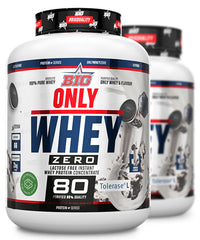
![CREABIG [Creapure®]](http://bigsupps.site/cdn/shop/products/producto_BIG_creabig_creapure_250g_0noflavour_500x600_8c48a126-a2a2-46a5-9bbd-8763ab82d768_200x.jpg?v=1757315967)
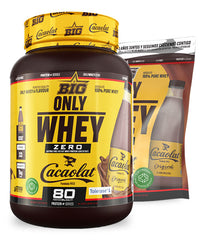
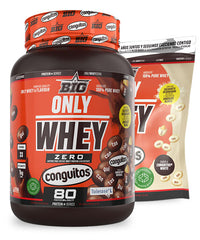
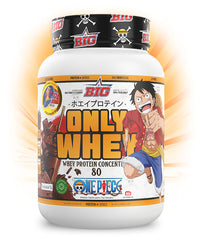
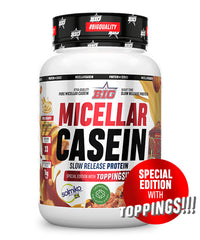
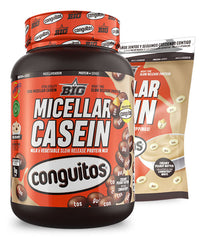
![CFM ISO ZERO [saco]](http://bigsupps.site/cdn/shop/files/producto_cfm_doypack_0noflavour_500x600a_200x.jpg?v=1750981452)
![CLEAR ISO ZERO [750g]](http://bigsupps.site/cdn/shop/files/producto_BIG_clearprotein_icepop_0noflavour_500x600a_200x.jpg?v=1757074297)
![CREABIG FIESTA® KOJAK® flavor - [250g]](http://bigsupps.site/cdn/shop/files/producto_BIG_creabig_kojak_0noflavour_500x600a_200x.jpg?v=1763548822)


